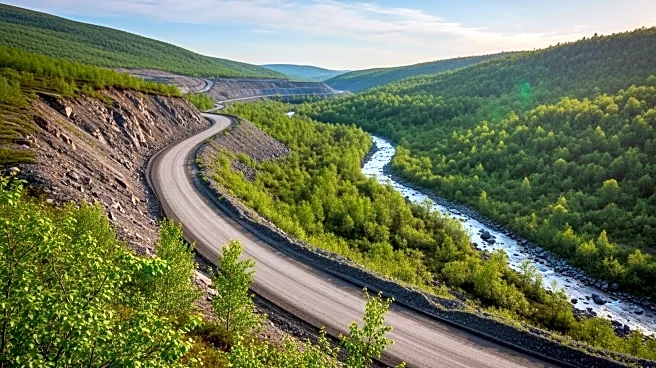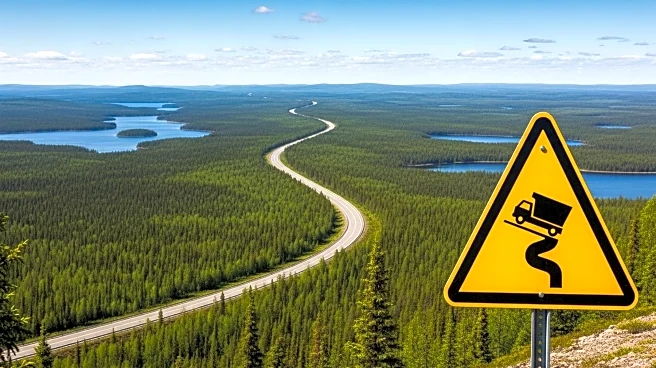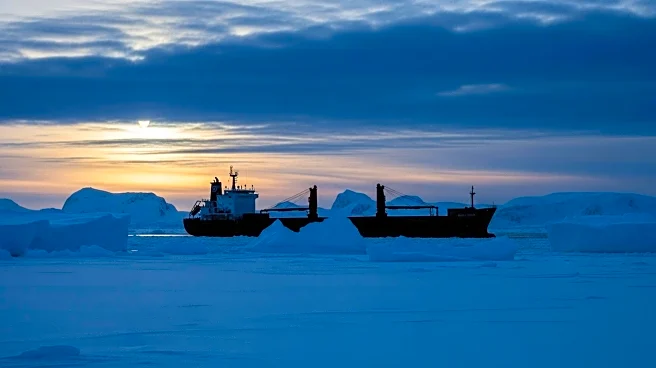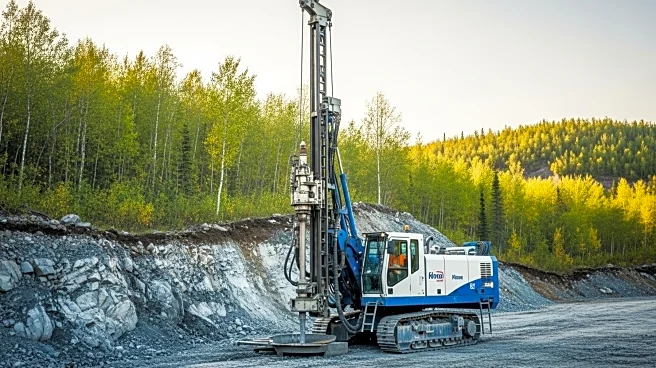What's Happening?
Torngat Metals, a Quebec-based critical minerals company, has proposed the construction of a 175-kilometer road connecting Voisey's Bay in northern Labrador to Lac Brisson, Quebec. The project, known as Strange Lake, aims to facilitate ore transportation to a port facility in Sept-Îles. CEO Yves Leduc emphasized the importance of the road for unlocking regional potential and has engaged with six Indigenous communities in Labrador to address environmental concerns. However, Torngat Mountains MHA Lela Evans expressed skepticism, highlighting a disconnect between the company and local communities, particularly the Inuit of Nain and the Innu of Natuashish. Evans raised concerns about the road's impact on caribou birthing areas and arctic char streams, suggesting that the benefits would primarily accrue to Quebec while Labrador bears the environmental burden.
Why It's Important?
The proposed road project has significant implications for regional development and environmental stewardship. While it promises economic benefits through job creation and improved infrastructure, it also poses potential risks to local ecosystems and Indigenous ways of life. The concerns raised by MHA Lela Evans underscore the need for careful consideration of environmental impacts and community interests. The project highlights the broader challenge of balancing economic development with environmental protection and Indigenous rights, a recurring theme in resource extraction projects across Canada and the U.S.
What's Next?
Torngat Metals CEO Yves Leduc plans to return to Labrador in the fall to engage further with stakeholders and build trust in the project. This ongoing dialogue will be crucial in addressing community concerns and ensuring that the project proceeds in a manner that respects environmental and Indigenous interests. The outcome of these discussions could influence future regulatory approvals and community support for the project.
Beyond the Headlines
The Strange Lake project raises broader questions about the role of Indigenous communities in resource development decisions. It highlights the importance of meaningful consultation and collaboration in projects that affect traditional lands and lifestyles. The situation in Labrador reflects similar challenges faced by Indigenous groups in the U.S., where resource development often intersects with cultural preservation and environmental sustainability.











